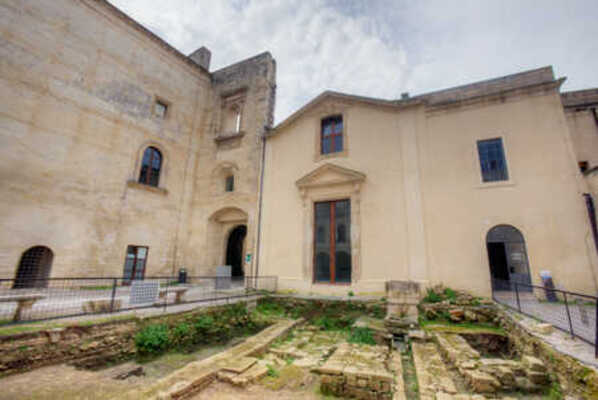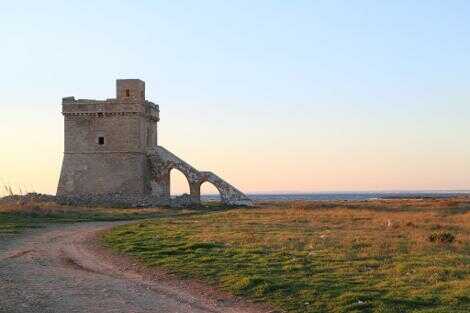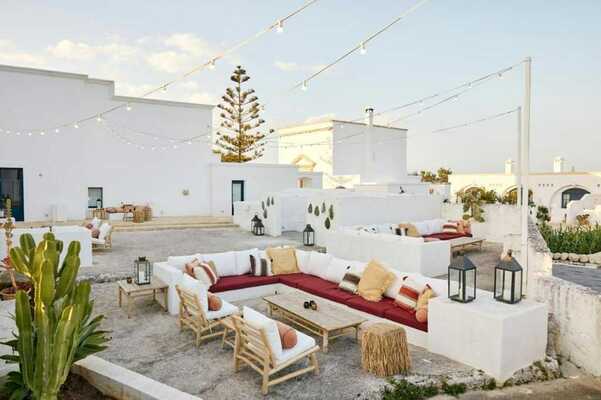Castles in Salento
There are more than a hundred castles and palaces still in excellent condition scattered throughout Salento and some of these are true artistic heritages of enormous historical value. Scattered across the provinces of Lecce, Taranto and Brindisi, these castles are evidence of past colonizations and the fortification necessary for the defense of the most noble families.
We therefore list the 5 most beautiful castles to visit during your trip to Salento!
Gallipoli Castle

Dominating the profile of the old city of Gallipoli is the Angevin Aragonese Castle, the imposing manor that stands in the eastern area of the island which houses the ancient village, near the bridge that links the old part of the city to the new one.
Built in the 13th century at the behest of Carlo I d’Angiò, it underwent radical changes over time, until the 16th century, when a fifth tower was also added, which served to defend against sea attacks and protect access to the city. It is a fortified construction with characteristics of high military engineering that can be visited today. Most likely the Angevins and the Aragonese made substantial changes to the castle of Roman origin: the quadrangular plan of the structure, equipped with three towers and a polygonal tower, was almost completely isolated by moats on all sides. Furthermore, in 1522, the Rivellino was built, i.e. a fifth circular tower, lower and wider than the others, in an advanced position with respect to the city walls. A sort of vanguard in the defensive system.
Today, the entire Castle has been redeveloped and thanks to a new project, areas have been created for the creation of exhibitions, cultural events and small theatrical shows.
Carlo V Castle in Lecce

The Carlo V Castle of Lecce is the leading star of the cultural circuit of Salento, revamped in every aspect and function and transformed into an evocative setting for cultural events of various types, from artistic exhibitions to food and wine events, as a center for the dissemination of traditions and local riches.
It was Carlo V of Habsburg who wanted its construction which is now located in the city center near Piazza Sant’Oronzo. It is a very large building with a quadrangular shape which has four bastions at the four corners. You enter from the Royal Door which gives access to the internal courtyard of the Castle. In the past the building had a military function, it even had a moat along its entire perimeter (today the moat no longer exists) and even today you can see the positions where the artillery pieces were located. Then, from 1870 to 1979 it became a barracks until the Military Administration handed it over to the Municipality of Lecce.
Today it is a visitable space where art exhibitions, conferences and cultural initiatives are held. Symbol of local artistic craftsmanship, papier-mâché is the protagonist of the museum set up in the Carlo V Castle. Walking through the regal rooms, you can admire a collection of around 80 works created by the major local papier-mâché makers from the 18th century to the present day. Videos, images and reconstructions of real “shops” make the visit even more fascinating.
Copertino Castle

Among the many castles that make a fine display in Salento, that of Copertino deserves a special mention, located in Piazza Castello, a fortified complex built in the 1530s and completed in 1540 by the Apulian architect Evangelista Menga by will of the Marquis Alfonso Granaries Castriota. The latter was a general of Carlo V and feudal lord of the large county established in 1266 by Carlo I d’Angiò.
Copertino castle, with a quadrilateral plan, contains previous buildings within it, including the Angevin tower, dating back to the first structure. The manor, home to numerous noble families, is a very important example of military architecture. It is surrounded by a large moat carved into the rock and four bastions at the corners.
Entering through the Renaissance style door you enter the internal courtyard, from which it is possible to admire various buildings dating back to different eras. On the right there is a portal with a tympanum that leads to the chapel dedicated to San Marco. The small church, with a rectangular plan and barrel vaults, houses the tombs of the marquises, created by the master L. A. Russo and the frescoes created by the local painter Gianserio Strafella.
The upper floor is accessed via an open staircase that leads to the rooms of the old palace, dating back to 1400 and 1500. Here, in the approximately twenty rooms that make up the floor, the barons lived. Halfway up the stairs you can see the remains of the 15th century frescoes from the old Maddalena chapel.
The Angevin Castle is the main protagonist for events, gastronomy, artistic and cultural events with national and international artists.
Castle de’ Monti of Corigliano d’Otranto

Walking through the many streets of Salento, you cannot fail to visit the Castle of Corigliano d’Otranto, which represents the most complete model of the transition of military architecture from square to round towers: in fact it has a quadrangular layout with four corner towers, surrounded by a deep ditch.
Each tower presents the heraldic coat of arms of the de’ Monti accompanied by allegorical depictions of the four cardinal virtues and by bas-reliefs of as many Saints under whose protection each tower is placed. Looking at the main facade, the tower on the left is dedicated to San Michele Arcangelo whose effigy is flanked by the allegory of the fortress; the tower on the right is dedicated to Sant’Antonio Abate who is accompanied by the allegory of temperance. The other towers are dedicated to San Giorgio and San Giovanni Battista, whose bas-reliefs are associated with allegorical representations of prudence and justice respectively.
Having lost its original defensive function, in the mid-seventeenth century the castle was adapted, according to the fashion of the time, to the aesthetic and representative needs of the feudal lord’s family, creating a baroque façade superimposed on the pre-existing one.
Today it is possible to visit the Castle for free or for a fee with a guide, but events are often organized by the Korianì social cooperative, such as stargazing from the Castle terraces.
Acaya Castle (LE)

A few kilometers from the Salento Adriatic coast, not far from Lecce, there is the village of Acaya, formerly called Segine. It is one of the castles built according to the most representative military techniques of Salento.
Today the fortified village of Acaya Castle is a point of reference for numerous cultural events. Very evocative is the historical procession and palio of the families, a Renaissance festival with nobles, ladies, knights, magistrates, falconers, musicians and commoners, a historical re-enactment that attracts numerous visitors.
The castle entirely built in Lecce stone, together with the fortified village, is linked to the figure of Gian Giacomo d’Acaya, military architect of Carlo V, who made numerous changes in the mid-sixteenth century, so much so that the city changed its name in his honour, from Segine in Acaya.
The castle was once entirely surrounded by a moat. It has two circular towers in Lecce stone and a spearhead bastion to the south-east. The fortress is accessed from the north through an entrance hall that led to the stables, beneath which there was once an underground oil mill. During the works, a late Byzantine fresco was also found, depicting religious motifs, perhaps pertaining to a monastic complex that housed religious communities of the Greek rite. The elegant and residential part was located on the upper floors and consisted of six rooms. In the square room of the bastion there is a painting representing the coat of arms of the Spanish kings.
The church was rebuilt by Gian Giacomo on an already existing medieval one, built by Pietro dell’Acaya in 1420. Of this church, only the bell tower and the sacristy remain as evidence.
To conclude, if you want to take a tour of the Castles in Salento, you can’t miss the ones mentioned above.

Carlo V Castle in Lecce
Among the many wonders that the city of Lecce hosts, we cannot forget the Carlo V Castle, which stands a short distance from the famous Piazza Sant'Oronzo, a must-visit place for anyone who finds themselves in the splendid baroque city.

Coastal towers in Salento
The coastal towers scattered throughout Salento are some of the most important historical testimonies of the period in which the region represented the frontier of Europe, the bridge from the Western world to the East.

Salento farmhouses (“masserie”)
Very often olive tree branches, vine shoots and prickly pear stems hide old scars: abandoned ruins that demonstrate, to us who approach respectfully, the pride of being part of the red and warm land of Salento. The farmhouses (masserie) are the undisputed object of our memory, the testimony of what we are, the pretext to remain linked to our roots in Salento.
